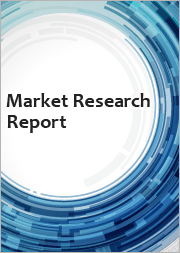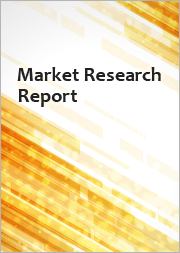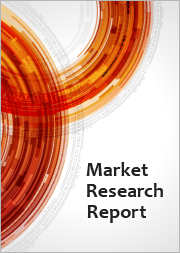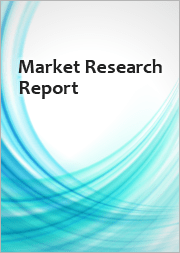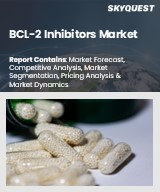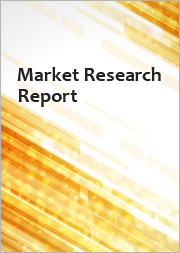
|
시장보고서
상품코드
1494760
세계의 표피 성장인자 수용체(EGFR) 억제제 시장 예측(-2030년)Epidermal Growth Factor Receptor Inhibitors Market Forecasts to 2030 - Global Analysis By Type, Drug Type, Mode of Administration, Distribution Channel, Application, End User and By Geography |
||||||
Stratistics MRC에 따르면 세계의 표피 성장인자 수용체(EGFR) 억제제 시장은 2024년 141억 달러로 추정되고, 예측기간 중 CAGR은 14.2%로 성장할 전망이며, 2030년에는 314억 달러에 달할 것으로 예측됩니다.
표피 성장인자 수용체(EGFR) 억제제는 세포 표면에 존재하는 단백질인 표피 성장인자 수용체를 표적으로 하는 제제의 일종입니다. EGFR은 세포의 증식과 분열에 관여하고 있으며, 그 과잉 활성은 어떤 유형의 암, 특히 폐암과 대장암의 발생과 진행에 관련되어 있습니다. GFR 억제제는 단독 혹은 화학요법이나 방사선요법 등의 다른 암치료와의 병용으로 다양한 암의 치료에 사용되고 있습니다.
NIH에 의하면, 미국에서는 최근, 폐암, 대장암, 유방암 등 다양한 유형의 주요암의 신규 증례가 현저하게 증가하고 있습니다. 2020년에는 미국에서 새롭게 180만명이 암으로 진단되어 60만 6520명이 이 질병으로 사망할 것으로 추정되고 있습니다.
표적 치료 채택 확대
시장은 진화하는 치료 상황을 반영하여 표적 요법의 채용이 급증하고 있습니다. 표적요법은 암세포를 특이적으로 표적으로 함으로써 암과 싸우는 정밀도를 높여 건강한 조직에 대한 손상을 최소화합니다. 이 패러다임 시프트는 연구개발의 진보에 더해 암의 진행을 촉진하는 분자경로의 이해가 진행되고 있는 것이 배경에 있습니다. 개인화 치료 접근법이 보급됨에 따라 개별 환자에 맞는 치료로의 전환이 진행됨에 따라 시장은 크게 성장하고 있습니다.
대체 요법의 가용성
시장은 대체 요법에 대한 대응이라는 문제에 직면하고 있습니다. EGFR 억제제의 효능에도 불구하고, 면역요법 및 표적 치료와 같은 대체 치료가 경쟁이 되고 있습니다. 또한 EGFR 억제제에 대한 내성과 부작용이 복잡성의 원인이 되었습니다. 대체 요법의 사용 편의성, 구매 용이성, 환자 인지도 확보는 여전히 중요한 장애물입니다. 시장은 이러한 치료법을 치료 프로토콜에 통합하고 최적의 결과를 얻기 위해 환자 고유의 요구에 대응함으로써 적응해야 합니다.
암 이환율 상승
시장에서는 암 이환율의 상승이라는 우려해야 할 경향을 볼 수 있습니다. 엘로티닙이나 게피티닙 등의 EGFR 억제제를 이용한 치료가 진보하고 있음에도 불구하고, 이러한 요법에 의존하는 암 증례의 발생률은 증가하고 있습니다. 이것은 EGFR에 기인하는 암의 유병률 증가 또는 이전에는 이러한 약제에 반응한 환자에서의 잠재적인 내성 발현 중 어느 것을 나타낼 수 있습니다. 이러한 동향은 암 생물학의 지속적인 연구와 혁신적인 치료 전략 개발의 필요성을 강조하고 있습니다.
고액의 치료비
이 시장은 고액의 치료비에 의한 과제에 직면하고 있어 환자에게 이용하기 어려운 장벽이 되고 있습니다. 특정 암 치료에 효과적임에도 불구하고 억제제의 경제적 부담은 그 확산을 제한합니다. 이 비용 요인은 구명 치료에 대한 공정한 접근을 보장하기 위해 이해 관계자가 협력하여 더 저렴한 옵션을 개발하거나 보조금을 지원하는 방법을 모색할 필요성을 강조합니다.
COVID-19의 영향 :
COVID-19의 유행은 시장에 큰 영향을 주었고 제조, 공급망 및 임상시험에 혼란을 가져왔습니다. 폐쇄 및 제한으로 인해 헬스케어 시설에 대한 환자의 접근이 방해되어 진단 및 치료의 시작에 영향을 미쳤습니다. 그러나 원격 의료 및 원격 모니터링의 도입으로 어느 정도 지속성이 유지되었습니다. 시장은 수요 변동을 목격하고 필수적인 치료를 선호하는 방향으로 이동했습니다. 과제에도 불구하고 팬데믹의 어려움 가운데 새로운 요구에 대응하고 치료 성과를 최적화하는 것을 목표로, 지속적인 연구 개발이 이루어졌습니다.
예측기간 동안 병용요법 분야가 최대가 될 전망
예측 기간 동안 병용 요법 분야가 최대가 될 전망입니다. 여러 경로를 동시에 표적화함으로써 이러한 요법은 효능을 높이고 내성 메커니즘을 극복하는 것을 목표로 합니다. EGFR 억제제와 화학요법, 면역요법, 기타 표적약제와의 병용요법이 검토되고 있으며, 다양한 암종에서 가능성이 나타났습니다. 이러한 접근법은 개인화된 치료 요법에 대한 새로운 길을 제공하고, 이종 종양 프로파일 및 적응성 저항 메커니즘에 대처함으로써 환자의 예후를 개선시킬 수 있습니다.
예측 기간 동안 CAGR이 가장 높은 것은 대장암 부문입니다.
대장암 분야는 표적 치료의 진보로 예측 기간 중에 가장 높은 CAGR이 예상됩니다. 세툭시맙 및 파니투무맙과 같은 이러한 억제제는 EGFR 신호전달 경로를 억제함으로써 환자의 예후를 개선시키는 유망한 결과를 나타냅니다. 세계의 대장암 유병률 상승과 맞춤형 치료에 대한 수요가 높아짐에 따라 EGFR 억제제 시장은 크게 성장할 전망입니다.
최대 점유율을 차지하는 지역
북미는 암 이환율 증가나 표적 치료의 진보 등의 요인에 의해 예측 기간 중 최대 시장 점유율을 차지할 것으로 예측됩니다. 정밀의료에 초점을 맞춘 이러한 억제제는 폐암과 대장암 등 다양한 암 치료에 중요한 역할을 하고 있습니다. 이 지역의 주요 기업들은 혁신적인 치료법의 도입을 목표로 연구개발에 계속 투자하고 있습니다.
CAGR이 가장 높은 지역 :
예측 기간 동안 아시아태평양이 가장 높은 CAGR을 유지할 것으로 예측됩니다. 이 지역에서는 폐암이나 대장암 등 EGFR 억제제로 치료되는 경우가 많은 암의 이환율이 상승하고 있습니다. 암에 대한 의식의 높아짐과 검진 프로그램의 충실이 암의 조기 발견으로 연결되어, 그 결과, 표적 치료의 대상이 되는 환자가 증가하고 있습니다. 게다가 의료비와 의식이 높아지면서 시장의 성장을 더욱 뒷받침해 진행중인 임상시험과 제품상시를 특징으로 하는 경쟁 구도를 조성하고 있습니다.
무료 맞춤설정 서비스
이 보고서를 구독하는 고객은 다음 무료 맞춤설정 옵션 중 하나를 사용할 수 있습니다.
- 기업 프로파일
- 추가 시장 기업의 종합적 프로파일링(3개사까지)
- 주요 기업의 SWOT 분석(3개사까지)
- 지역 세분화
- 고객의 관심에 응한 주요국 시장 추계, 예측 및 CAGR(주 : 타당성 확인에 따름)
- 경쟁 벤치마킹
- 제품 포트폴리오, 지리적 존재 및 전략적 제휴에 기반한 주요 기업 벤치마킹
목차
제1장 주요 요약
제2장 서문
- 개요
- 이해관계자
- 조사 범위
- 조사 방법
- 데이터 마이닝
- 데이터 분석
- 데이터 검증
- 조사 접근
- 조사 정보원
- 1차 조사 정보원
- 2차 조사 정보원
- 전제조건
제3장 시장 동향 분석
- 성장 촉진요인
- 억제요인
- 기회
- 위협
- 용도 분석
- 최종 사용자 분석
- 신흥 시장
- COVID-19의 영향
제4장 Porter's Five Forces 분석
- 공급기업의 협상력
- 구매자의 협상력
- 대체품의 위협
- 신규 진입업자의 위협
- 경쟁 기업간 경쟁 관계
제5장 세계의 표피 성장인자 수용체(EGFR) 억제제 시장 : 유형별
- 단클론항체(mAbs)
- 티로신 키나아제 억제제(TKI)
- 병용 요법
- 기타 유형
제6장 세계의 표피 성장인자 수용체(EGFR) 억제제 시장 : 약제 유형별
- 엘로티닙
- 세툭시맙
- 게피티닙
- 오시멜티닙
- 아파티닙
- 기타 약물 유형
제7장 세계의 표피 성장인자 수용체(EGFR) 억제제 시장 : 투여 모드별
- 경구
- 정맥내
제8장 세계의 표피 성장인자 수용체(EGFR) 억제제 시장 : 유통 채널별
- 병원 약국
- 소매 약국
- 온라인 약국
제9장 세계의 표피 성장인자 수용체(EGFR) 억제제 시장 : 용도별
- 비소세포폐암(NSCLC)
- 췌장암
- 대장암
- 두경부암
- 기타 용도
제10장 세계의 표피 성장인자 수용체(EGFR) 억제제 시장 : 최종 사용자별
- 병원
- 암 치료 센터
- 학술연구기관
- 기타 최종 사용자
제11장 세계의 표피 성장인자 수용체(EGFR) 억제제 시장 : 지역별
- 북미
- 미국
- 캐나다
- 멕시코
- 유럽
- 독일
- 영국
- 이탈리아
- 프랑스
- 스페인
- 기타 유럽
- 아시아태평양
- 일본
- 중국
- 인도
- 호주
- 뉴질랜드
- 한국
- 기타 아시아태평양
- 남미
- 아르헨티나
- 브라질
- 칠레
- 기타 남미
- 중동 및 아프리카
- 사우디아라비아
- 아랍에미리트(UAE)
- 카타르
- 남아프리카
- 기타 중동 및 아프리카
제12장 주요 발전
- 계약, 파트너십, 협업 및 합작투자(JV)
- 인수 및 합병
- 신제품 발매
- 사업 확대
- 기타 주요 전략
제13장 기업 프로파일링
- Novartis AG
- F. Hoffmann-La Roche Ltd
- Merck & Co.
- Amgen Inc
- Eli Lilly and Company
- OSI Pharmaceuticals Inc
- Johnson & Johnson
- Genentech, Inc
- Pfizer
- AstraZeneca PLC
- Bayer AG
- AbbVie
- Bristol Myers Squibb
- Teva Pharmaceutical Industries
- Takeda Pharmaceutical Company Limited
- Boehringer Ingelheim
- Regeneron Pharmaceuticals
According to Stratistics MRC, the Global Epidermal Growth Factor Receptor (EGFR) Inhibitors Market is accounted for $14.1 billion in 2024 and is expected to reach $31.4 billion by 2030 growing at a CAGR of 14.2% during the forecast period. Epidermal Growth Factor Receptor (EGFR) inhibitors are a class of medications that target the epidermal growth factor receptor, a protein found on the surface of cells. EGFR is involved in cell growth and division, and its overactivity is associated with the development and progression of certain types of cancer, particularly lung cancer and colorectal cancer. GFR inhibitors are used in the treatment of various cancers, either alone or in combination with other cancer therapies, such as chemotherapy or radiation therapy.
According to the NIH, the new cases of various types of major cancers, such as lung cancer, colorectal cancer, and breast cancer, in the US have increased significantly in recent years. In 2020, an estimated 1.8 million new cases of cancer were diagnosed in the US, and 606,520 people will die from the disease.
Market Dynamics:
Driver:
Growing adoption of targeted therapies
The market is witnessing a surge in adoption of targeted therapies, reflecting an evolving treatment landscape. Targeted therapies offer precision in combating cancer by specifically targeting cancer cells, minimizing damage to healthy tissue. This paradigm shift is driven by advancements in research and development, alongside increasing understanding of molecular pathways driving cancer progression. With personalized treatment approaches gaining traction, the market is poised for substantial growth as it moves towards tailored therapies for individual patients.
Restraint:
Availability of alternative therapies
The market faces challenges in accommodating alternative therapies. Despite the effectiveness of EGFR inhibitors, alternative treatments like immunotherapy and targeted therapies pose competition. Additionally, resistance to EGFR inhibitors and adverse effects contribute to the complexity. Ensuring accessibility, affordability, and patient awareness of alternative therapies remain key hurdles. The market must adapt by integrating these therapies into treatment protocols and addressing patient-specific needs for optimal outcomes.
Opportunity:
Rising cancer rates
The market has seen a concerning trend of rising cancer rates. Despite advancements in treatment utilizing EGFR inhibitors, such as Erlotinib and Gefitinib, the incidence of cancer cases reliant on these therapies has increased. This may indicate either a growing prevalence of EGFR-driven cancers or potential resistance development in patients previously responsive to these drugs. Such trends underscore the need for continued research into cancer biology and the development of innovative therapeutic strategies.
Threat:
High cost of treatment
The market faces challenges due to high treatment costs, posing a barrier to accessibility for patients. Despite their efficacy in treating certain cancers, the financial burden associated with these inhibitors limits their widespread adoption. This cost factor underscores the need for collaborative efforts among stakeholders to develop more affordable options or explore avenues for subsidization to ensure equitable access to life-saving treatments.
Covid-19 Impact:
The COVID-19 pandemic significantly impacted the Market, causing disruptions in manufacturing, supply chains, and clinical trials. Lockdowns and restrictions hindered patient access to healthcare facilities, affecting diagnosis and treatment initiation. However, with the adoption of telemedicine and remote monitoring, some continuity was maintained. The market witnessed fluctuations in demand, with a shift towards prioritizing essential treatments. Despite challenges, ongoing research and development efforts persisted, aiming to address emerging needs and optimize therapeutic outcomes amidst the pandemic's challenges.
The combination therapies segment is expected to be the largest during the forecast period
The combination therapies segment is expected to be the largest during the forecast period. By targeting multiple pathways simultaneously, these therapies aim to enhance efficacy and overcome resistance mechanisms. Combinations of EGFR inhibitors with chemotherapy, immunotherapy, and other targeted agents are being explored, showing potential in various cancer types. Such approaches offer new avenues for personalized treatment regimens and may improve patient outcomes by addressing heterogeneous tumor profiles and adaptive resistance mechanisms.
The colorectal cancer segment is expected to have the highest CAGR during the forecast period
The colorectal cancer segment is expected to have the highest CAGR during the forecast period driven by advancements in targeted therapies. These inhibitors, such as cetuximab and panitumumab, have shown promising results in improving patient outcomes by inhibiting EGFR signaling pathways. With increasing prevalence of colorectal cancer globally, coupled with growing demand for personalized treatment approaches, the EGFR inhibitors market is poised for significant growth.
Region with largest share:
North America is projected to hold the largest market share during the forecast period driven by factors such as increasing cancer prevalence and advancements in targeted therapies. With a focus on precision medicine, these inhibitors play a crucial role in treating various cancers, including lung and colorectal cancer. Key players in the region continue to invest in research and development, aiming to introduce innovative therapies.
Region with highest CAGR:
Asia Pacific is projected to hold the highest CAGR over the forecast period. The region has witnessed a rise in the incidence of cancer, including lung cancer and colorectal cancer, which are often treated with EGFR inhibitors. Increasing awareness about cancer and the availability of screening programs have led to earlier detection of cancers, resulting in more patients being eligible for targeted therapies. Moreover, rising healthcare expenditure and awareness further bolster market growth, fostering a competitive landscape characterized by ongoing clinical trials and product launches.
Key players in the market
Some of the key players in Epidermal Growth Factor Receptor (EGFR) Inhibitors market include Novartis AG, F. Hoffmann-La Roche Ltd, Merck & Co., Amgen Inc, Eli Lilly and Company, OSI Pharmaceuticals Inc, Johnson & Johnson, Genentech, Inc, Pfizer, AstraZeneca PLC, Bayer AG, AbbVie, Bristol Myers Squibb, Teva Pharmaceutical Industries, Takeda Pharmaceutical Company Limited, Boehringer Ingelheim and Regeneron Pharmaceuticals.
Key Developments:
In May 2023, Eli Lilly and Innovent Biologics, Inc. jointly announced that the National Medical Products Administration (NMPA) of China has approved the supplemental New Drug Application (sNDA) for TYVYT(R) (sintilimab injection) in combination with bevacizumab and chemotherapy (pemetrexed and cisplatin) in patients with epidermal growth factor receptor (EGFR)-mutated non-squamous non-small cell lung cancer (NSCLC).
In September 2022, Novartis announced results from a new pooled exploratory analysis across the entire MONALEESA Phase III program, confirming nearly one year of additional overall survival (OS) benefit in a subgroup of patients with aggressive forms of hormone receptor-positive, human epidermal growth factor receptor-2 negative (HR+/HER2-) advanced breast cancer (aBC)1.
Types Covered:
- Monoclonal Antibodies (mAbs)
- Tyrosine Kinase Inhibitors (TKIs)
- Combination Therapies
- Other Types
Drug Types Covered:
- Erlotinib
- Cetuximab
- Gefitinib
- Osimertinib
- Afatinib
- Other Drug Types
Mode of Administration Covered:
- Oral
- Intravenous
Distribution Channels Covered:
- Hospital Pharmacies
- Retail Pharmacies
- Online Pharmacies
Applications Covered:
- Non-Small Cell Lung Cancer (NSCLC)
- Pancreatic Cancer
- Colorectal Cancer
- Head and Neck Cancer
- Other Applications
End Users Covered:
- Hospitals
- Cancer Treatment Centers
- Academic & Research Institutes
- Other End Users
Regions Covered:
- North America
- US
- Canada
- Mexico
- Europe
- Germany
- UK
- Italy
- France
- Spain
- Rest of Europe
- Asia Pacific
- Japan
- China
- India
- Australia
- New Zealand
- South Korea
- Rest of Asia Pacific
- South America
- Argentina
- Brazil
- Chile
- Rest of South America
- Middle East & Africa
- Saudi Arabia
- UAE
- Qatar
- South Africa
- Rest of Middle East & Africa
What our report offers:
- Market share assessments for the regional and country-level segments
- Strategic recommendations for the new entrants
- Covers Market data for the years 2022, 2023, 2024, 2026, and 2030
- Market Trends (Drivers, Constraints, Opportunities, Threats, Challenges, Investment Opportunities, and recommendations)
- Strategic recommendations in key business segments based on the market estimations
- Competitive landscaping mapping the key common trends
- Company profiling with detailed strategies, financials, and recent developments
- Supply chain trends mapping the latest technological advancements
Free Customization Offerings:
All the customers of this report will be entitled to receive one of the following free customization options:
- Company Profiling
- Comprehensive profiling of additional market players (up to 3)
- SWOT Analysis of key players (up to 3)
- Regional Segmentation
- Market estimations, Forecasts and CAGR of any prominent country as per the client's interest (Note: Depends on feasibility check)
- Competitive Benchmarking
- Benchmarking of key players based on product portfolio, geographical presence, and strategic alliances
Table of Contents
1 Executive Summary
2 Preface
- 2.1 Abstract
- 2.2 Stake Holders
- 2.3 Research Scope
- 2.4 Research Methodology
- 2.4.1 Data Mining
- 2.4.2 Data Analysis
- 2.4.3 Data Validation
- 2.4.4 Research Approach
- 2.5 Research Sources
- 2.5.1 Primary Research Sources
- 2.5.2 Secondary Research Sources
- 2.5.3 Assumptions
3 Market Trend Analysis
- 3.1 Introduction
- 3.2 Drivers
- 3.3 Restraints
- 3.4 Opportunities
- 3.5 Threats
- 3.6 Application Analysis
- 3.7 End User Analysis
- 3.8 Emerging Markets
- 3.9 Impact of Covid-19
4 Porters Five Force Analysis
- 4.1 Bargaining power of suppliers
- 4.2 Bargaining power of buyers
- 4.3 Threat of substitutes
- 4.4 Threat of new entrants
- 4.5 Competitive rivalry
5 Global Epidermal Growth Factor Receptor (EGFR) Market, By Type
- 5.1 Introduction
- 5.2 Monoclonal Antibodies (mAbs)
- 5.3 Tyrosine Kinase Inhibitors (TKIs)
- 5.4 Combination Therapies
- 5.5 Other Types
6 Global Epidermal Growth Factor Receptor (EGFR) Market, By Drug Type
- 6.1 Introduction
- 6.2 Erlotinib
- 6.3 Cetuximab
- 6.4 Gefitinib
- 6.5 Osimertinib
- 6.6 Afatinib
- 6.7 Other Drug Types
7 Global Epidermal Growth Factor Receptor (EGFR) Market, By Mode of Administration
- 7.1 Introduction
- 7.2 Oral
- 7.3 Intravenous
8 Global Epidermal Growth Factor Receptor (EGFR) Market, By Distribution Channel
- 8.1 Introduction
- 8.2 Hospital Pharmacies
- 8.3 Retail Pharmacies
- 8.4 Online Pharmacies
9 Global Epidermal Growth Factor Receptor (EGFR) Market, By Application
- 9.1 Introduction
- 9.2 Non-Small Cell Lung Cancer (NSCLC)
- 9.3 Pancreatic Cancer
- 9.4 Colorectal Cancer
- 9.5 Head and Neck Cancer
- 9.6 Other Applications
10 Global Epidermal Growth Factor Receptor (EGFR) Market, By End User
- 10.1 Introduction
- 10.2 Hospitals
- 10.3 Cancer Treatment Centers
- 10.4 Academic & Research Institutes
- 10.5 Other End Users
11 Global Epidermal Growth Factor Receptor (EGFR) Market, By Geography
- 11.1 Introduction
- 11.2 North America
- 11.2.1 US
- 11.2.2 Canada
- 11.2.3 Mexico
- 11.3 Europe
- 11.3.1 Germany
- 11.3.2 UK
- 11.3.3 Italy
- 11.3.4 France
- 11.3.5 Spain
- 11.3.6 Rest of Europe
- 11.4 Asia Pacific
- 11.4.1 Japan
- 11.4.2 China
- 11.4.3 India
- 11.4.4 Australia
- 11.4.5 New Zealand
- 11.4.6 South Korea
- 11.4.7 Rest of Asia Pacific
- 11.5 South America
- 11.5.1 Argentina
- 11.5.2 Brazil
- 11.5.3 Chile
- 11.5.4 Rest of South America
- 11.6 Middle East & Africa
- 11.6.1 Saudi Arabia
- 11.6.2 UAE
- 11.6.3 Qatar
- 11.6.4 South Africa
- 11.6.5 Rest of Middle East & Africa
12 Key Developments
- 12.1 Agreements, Partnerships, Collaborations and Joint Ventures
- 12.2 Acquisitions & Mergers
- 12.3 New Product Launch
- 12.4 Expansions
- 12.5 Other Key Strategies
13 Company Profiling
- 13.1 Novartis AG
- 13.2 F. Hoffmann-La Roche Ltd
- 13.3 Merck & Co.
- 13.4 Amgen Inc
- 13.5 Eli Lilly and Company
- 13.6 OSI Pharmaceuticals Inc
- 13.7 Johnson & Johnson
- 13.8 Genentech, Inc
- 13.9 Pfizer
- 13.10 AstraZeneca PLC
- 13.11 Bayer AG
- 13.12 AbbVie
- 13.13 Bristol Myers Squibb
- 13.14 Teva Pharmaceutical Industries
- 13.15 Takeda Pharmaceutical Company Limited
- 13.16 Boehringer Ingelheim
- 13.17 Regeneron Pharmaceuticals






